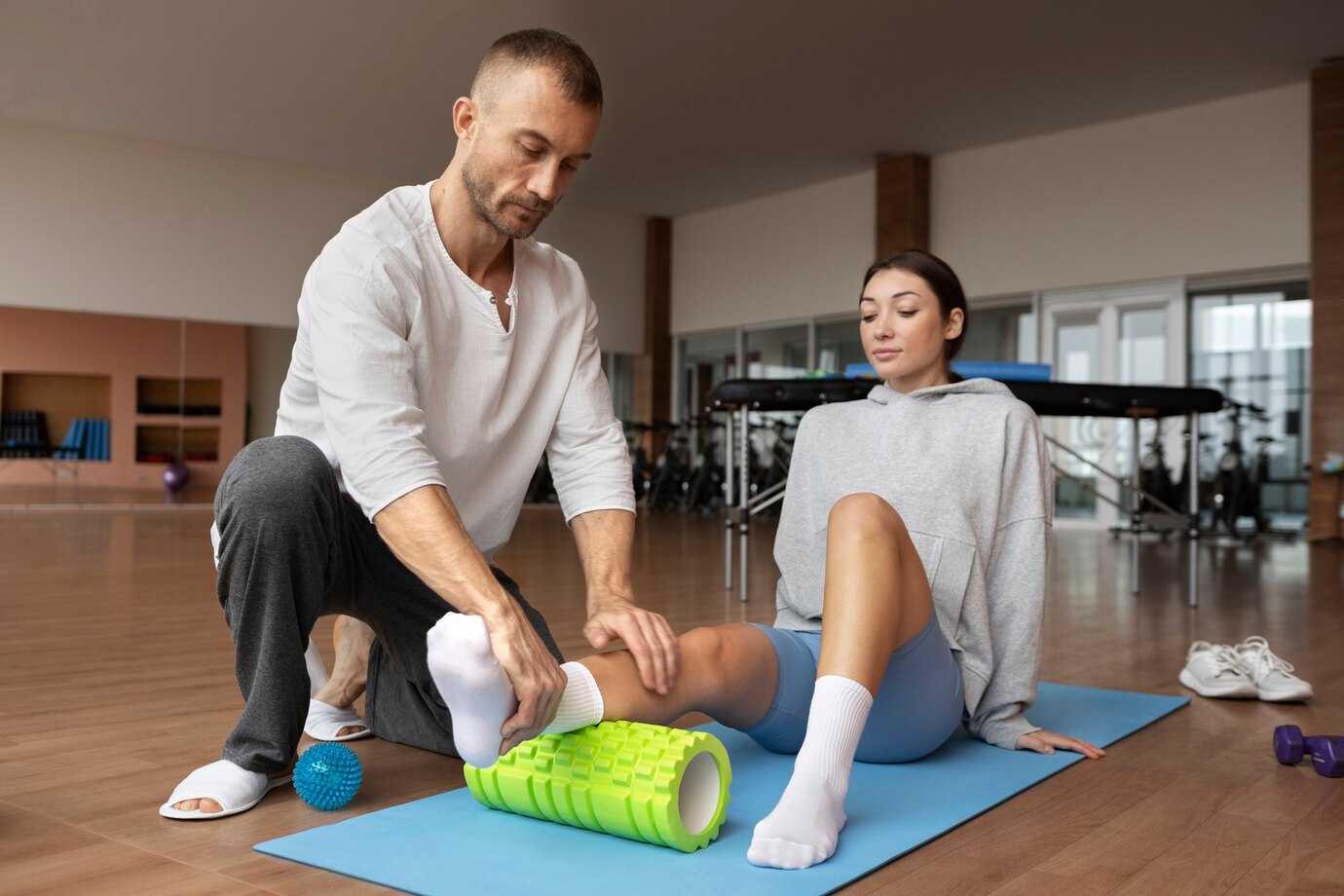Injuries are frustrating—especially when they keep you from the sport or activity you love. At Ace Physio Sports, we understand how important it is to recover the right way. That’s why our approach to Sports Injury Management and Rehabilitation is designed to not just heal but rebuild. We don’t rush recovery. We do it right—so you can come back stronger.
What is Sports Injury Management and Rehabilitation?
Sports Injury Management and Rehabilitation is more than just treatment. It’s a structured process that helps athletes and active individuals recover from injuries, regain strength, and return to peak performance.
At Ace Physio Sports, our goal is to support you at every step—from pain relief to performance enhancement. Whether you’ve had a sudden injury or are recovering post-surgery, our expert physiotherapists are here to help.
Common Sports Injuries We Treat
We see a wide variety of sports injuries every day. Some of the most common ones we treat through Sports Injury Management and Rehabilitation include:
- Muscle strains
- Ligament sprains
- Tendonitis and repetitive overuse injuries
- Stress fractures
- Joint dislocations and instability
- Post-surgical rehab (e.g., ACL reconstruction, rotator cuff repair)
No matter your condition, we tailor each Sports Injury Management and Rehabilitation plan to your unique needs and sport.
Our 5-Step Rehab Approach at Ace Physio Sports
1. We Start with the Root Cause
Good rehab starts with a good diagnosis. Our physiotherapists conduct a detailed assessment to figure out what caused the injury and how to fix it—so you don’t end up back here again.
2. Pain Relief and Inflammation Control
No athlete wants to push through constant pain. Our Sports Injury Management and Rehabilitation includes manual therapy, dry needling, electrotherapy, and ice/heat treatments to reduce inflammation and get you moving again.
3. Restoring Strength and Mobility
Injuries lead to weakness and stiffness. We focus on rebuilding muscle strength, improving joint mobility, and getting your full range of motion back through carefully designed exercises.
4. Sport-Specific Movements
Your rehab should look like your sport. Whether you’re a runner, tennis player, or footballer, we integrate real-sport movements into your Sports Injury Management and Rehabilitation, so you return confidently to play.
5. Prevention is Part of the Plan
Once you’re back, we keep you there. Our rehab doesn’t end when the pain stops. We work on correcting posture, improving balance, and optimizing movement to prevent reinjury.
Why Athletes Choose Ace Physio Sports
We’ve built a strong reputation in Sports Injury Management and Rehabilitation by staying focused on what matters:
- Specialist physiotherapists who know sports inside out
- Evidence-based treatments that actually work
- Modern rehab equipment to support your progress
- Personalized care tailored to your sport, injury, and goals
- Education-focused sessions so you understand your recovery and stay in control
Your Comeback Story Starts Here
You don’t have to stay sidelined. Whether you’re in pain, mid-recovery, or just not performing like before, our Sports Injury Management and Rehabilitation team is ready to help.
Let’s build your comeback—step by step, with the right care at the right pace.
FAQs
Sports injury rehabilitation is a structured recovery process designed to restore strength, mobility, and function after a sports-related injury. It includes targeted exercises, manual therapy, and injury-specific techniques to help athletes safely return to performance.
Sports injury management involves the diagnosis, treatment, and ongoing care of athletic injuries. It focuses on pain relief, recovery, prevention of further damage, and preparing the athlete for a safe return to activity.
The five stages include:
- Pain and inflammation control,
- Restoring joint mobility and flexibility,
- Strength rebuilding,
- Functional and sport-specific training,
- Return to sport and injury prevention.
The 7 principles are:
- Individualization,
- Specificity,
- Progressive overload,
- Recovery,
- Reversibility,
- Functional relevance,
- Periodization.
Rehabilitation helps restore function, reduce pain, and prevent future injuries. It also ensures the athlete regains confidence and performs safely at their highest level again.
A sports injury refers to damage caused by athletic activity, either through impact, overuse, or poor technique. Examples include sprains, strains, tendonitis, ACL tears, and stress fractures.
Treatment includes rest, ice, compression, and elevation (RICE), followed by physiotherapy, manual therapy, strength training, and sometimes surgery depending on the severity. A tailored rehab plan is often essential for full recovery.
Healing time varies depending on the severity of the injury—minor strains may heal in days, while more severe injuries may take weeks or months. Consistent physiotherapy and proper care can speed up recovery.
Sports therapy focuses on injury prevention and performance enhancement, while sports rehabilitation centers on recovery and restoring function after an injury. Both fields often overlap in managing an athlete’s health.
Common techniques include manual therapy, therapeutic exercises, dry needling, taping, electrotherapy, strength and flexibility training, and sport-specific drills. The combination depends on the type and severity of the injury.
Injury prevention helps athletes maintain performance, avoid downtime, and extend their careers. It also reduces long-term damage and the risk of recurring injuries through proper training and conditioning.










